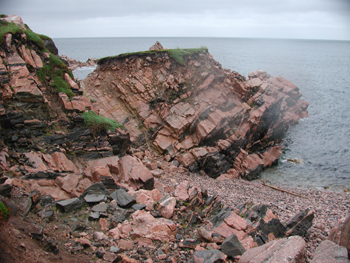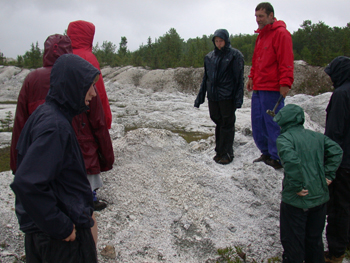Old, old rocks
The Cape Breton Highlands are in northeastern Nova Scotia. This part of
Nova Scotia is underlain by Grenvillian age basement rocks (~1.8 billion
year old rock). The rocks outcropping at White Point (picture on right)
in the Cape Breton Highlands are predominantly pink potassium feldspar,
quartz, and plagioclase (granitic) gneiss. Black, biotite schist also
outcrops at White Point.
The gneiss contains xenoliths or inclusions of biotite schist, indicating that the schist was emplaced prior to the gneiss. Gneiss is often metamophosed granite, which suggests that 1.8 billion years ago, granitic magma intruded the biotite schist. The magma ripped pieces of rock off the schist unit. When the magma cooled and solidified, the pieces of schist (xenoliths) were still trapped in the rock matrix. Both rocks were later deformed and metamorphosed.
In the picture on the right, the outcrop looks like it is made of layers of gneiss and schist. The layered appearance of the rocks suggests that the granitic magma preferentially intruded along foliations (mineral layers) in the schist.


